Bledsoe County Schools transform their energy training into cool savings
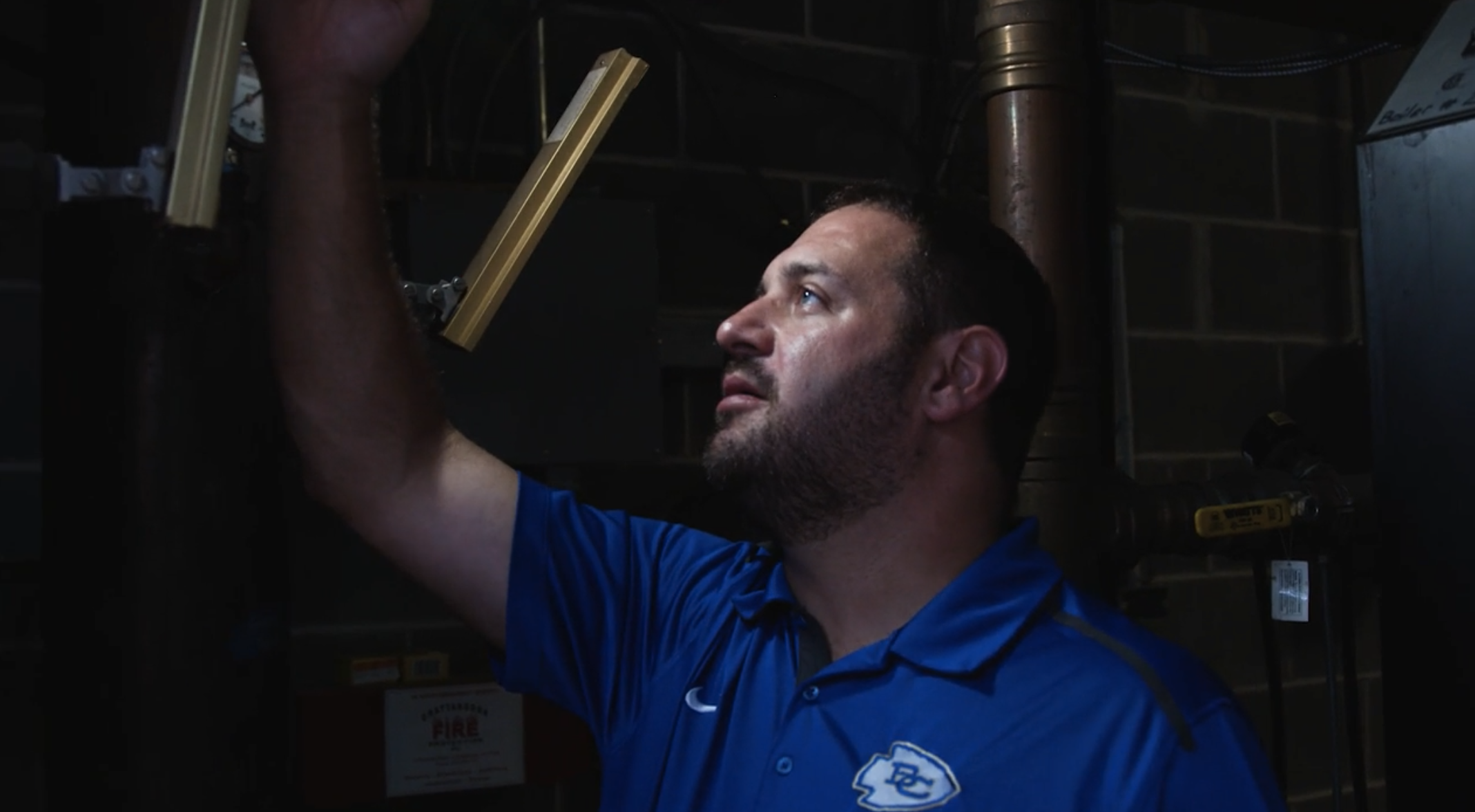
Brian Turner is up before the sun rises over the Sequatchie Valley in Middle Tennessee. His family is still sleeping as he drives through the thick morning fog to his father-in-law’s farm to help corral about 40 cattle for a morning weigh-in. He also sets out the feed and cuts some additional hay.
“Nothing you do on the farm you can do halfway. Farming is hard work,” says Turner. “When something breaks on a farm, you don’t buy new. You make it work and fix it.”
He has never shied away from hard work. On the contrary, Turner leans into it with a purpose. The people of Bledsoe County are raised to believe in hard work. It’s not uncommon for many to hold down two or three jobs to make ends meet in one of the state’s poorest counties. The county seat of Pikeville sits in the northern half of the valley, surrounded by the walls of the Walden Ridge to the east and Little Mountain to the west. The Sequatchie River passes through the eastern section of town. It’s an area rich in natural beauty but lacks the industry to keep many employed here.
“We make sacrifices when we stay here,” says Turner.
Unemployment hovers at 6%, nearly double the state average. Those who do find work have to travel outside the county. Turner considers himself fortunate to have a full-time job in town as maintenance, transportation and attendance supervisor at the Bledsoe County School District.
“We start in the morning with the bus runs. We always want to make sure the kids are getting to school safely,” says Turner. He then meets with his maintenance staff, overseeing three elementary schools, a middle school, a high school and a career tech center. Next, he works on the attendance records for each school and follows up with kids who are struggling to make it to class. The decade he’s worked at the school district has been eye-opening for Turner.
”I knew we had low-income families. But when I started working for the school district, it was way more than I expected. A lot of those families lean on the school to help them.”
School systems like Bledsoe County can become de facto childcare and meal service providers for struggling families. The district depends on property and sales tax dollars for its budget, but with just under 15,000 county residents, the tax base is insufficient.
“The amount of dollars the county can put back into the school system is minimal,” says Mike Partin, CEO and president of Sequachee Valley Electric Cooperative (SVEC). “The county school system is always looking for opportunities where they can bring in some money to help the school system to make a better school environment for the rural kids of Tennessee. That’s where TVA EnergyRight’s School Uplift made the difference.”
School Uplift helps districts make the energy efficiency grade
The School Uplift pilot kicked off in January 2020 with ten Tennessee schools from economic opportunity zones, including Bledsoe County High School and Pikeville Elementary. Led by EnergyRight Program Manager Clay Hoover and his team, the 12-month program provides schools in underserved areas with comprehensive energy management training. The program has two specific goals: to reduce a school’s utility cost to redirect money back into funding education and to improve the learning environment for teachers, staff and students.
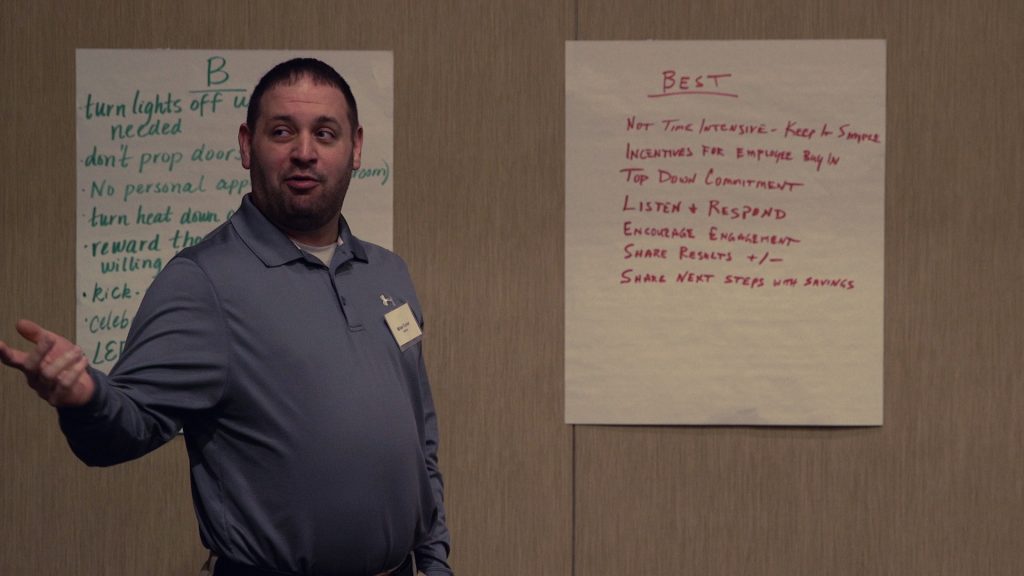
First, TVA EnergyRight engineers met with administrators from each school to conduct an energy audit and discuss energy efficiency pain points. School leaders then met throughout the year – in person and virtually – to learn about strategic energy management best practices, bounce ideas off each other and set energy efficiency goals. Hoover says these sharing sessions were beneficial for participants.
“A lot of schools were running equipment unnecessarily,” says Hoover. “They were leaving things on unnecessarily and had tight constraints on their control systems. By changing the operations, the schools can save a significant amount of energy.”
Hoover says Turner’s natural leadership shined in this setting. “Brian freely shared his expertise with the whole cohort,” says Hoover. “Other school directors looked to Brian for advice on how to implement energy-saving opportunities. You can quickly tell that he cares a lot about the school system and the kids and trying to improve the learning environment.”
Diane Elder, director of schools in nearby Pickett County, says Turner often called her early in the morning to exchange ideas. Many of the conversations happened while he was on the farm. “I’m barely waking up, and Brian’s talking excitedly on the phone about his ideas, and I can hear cattle mooing in the background.”
“We can’t have kids trying to learn in hot classrooms.”
Bledsoe County High School’s aging cooling tower has been Turner’s albatross. “We knew we had to replace the cooling tower because it was causing us lots of problems. TVA EnergyRight’s audit confirmed it was burning lots of energy,” says Turner.
A typical home HVAC system removes heat from inside the house and sends it to the outside unit that vents it. The high school uses a water system. It relies on a cooling tower to lower the temperature of the water and the air around it before sending the colder air through the school’s ductwork.
The cooling tower was always on the verge of breaking, and Turner was frustrated that he couldn’t fix it. “If the cooling tower stopped working, there would be no cold air in the building during the early summer, fall and spring months.”
Turner frequently pleaded before the school board for a new tower, but members were concerned about the $200,000 price tag. It’s roughly the maintenance team’s budget for an entire school year without factoring in salaries. “Being in the small rural districts, we don’t get a lot of extra money to spend on big maintenance projects.”
Turner thought he would never get the tower replaced. But then his schools successfully completed the School Uplift pilot and EnergyRight rewarded Turner and his team with two grants. The high school received a $200,000 building upgrades grant, and the elementary school was awarded a solar demonstration classroom grant. In addition, Tennessee’s Energy Efficient Schools Initiative matched EnergyRight’s building grant for a total of $400,000. “Tennessee has the best teachers in the nation, and we need our classrooms to match that standard to give students the best learning opportunity,” says Scott Slusher, EESI deputy director. “Making our schools more energy efficient will pay dividends for years to come.”
Turner says the grant money took an enormous weight off his shoulders. The new cooling tower was installed in October 2021 with enough money left over to complete other energy-saving projects.
“We were slowly trying to change the lighting and replace several older HVAC units, but the School Uplift grant helped us do that all at once,” says Turner.
EnergyRight says the pilot schools saved nearly 20% on their annual energy bills from behavior changes alone. Hoover says the additional facility upgrades will have lasting benefits. “LED lighting, energy efficient HVACs and the new cooling tower will further reduce energy consumption and costs over time. That empowers schools to redirect those savings to what matters most – educating children.”
Utility partnerships enhance the mission to help all customers
Hoover and Partin credit the strong partnership between EnergyRight and SVEC as one of the reasons for a successful School Uplift pilot.
“The only way you can achieve any kind of success is through partnership,” says Partin. “Unfortunately, there’s not one group or one agency that has enough resources to hit one out of the park. But when folks come together – SVEC standing shoulder to shoulder with Bledsoe County Schools and TVA EnergyRight’s School Uplift program – we’re starting to see the whole process bear fruit.”
Turner says his participation in School Uplift reshaped how he sees EnergyRight’s role. “When I started this program, SVEC was our electric provider, and TVA was our electric producer. After going through this program, they’re partners with us. They are the resources to help us.” The partnership has lasted. Turner says he still talks to the same TVA engineer who audited his schools at the beginning of the School Uplift pilot.
Opportunities are also expanding in Pikeville, highlighted by the recent announcement of a Minnesota-based manufacturing plant expanding its operations into Pikeville. It’s expected to produce 74 jobs and pump much-needed revenue into the community.
Nevertheless, Turner will still be back at the farm bright and early. Hard work doesn’t stop in Bledsoe County.
Related stories:
Home Uplift gives customers a hand up in creating a healthy, energy efficient home
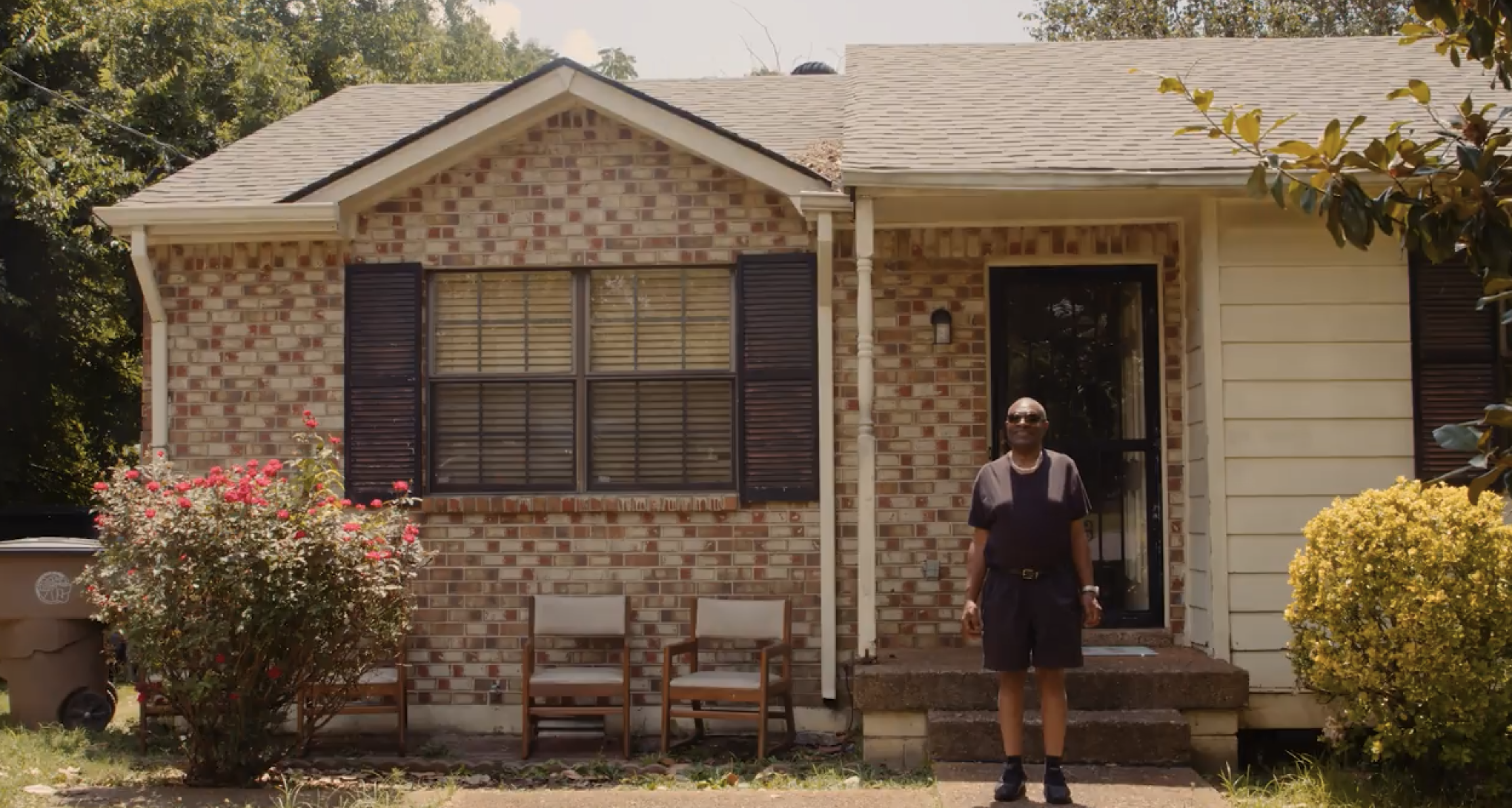
James Pardue is a little frustrated with the black car parked in front of his Antioch home. He purchased the used vehicle weeks ago to fix and resell, but he can’t get the car engine to turn over. Resigned to worry about it another day, he heads inside his home. His steps are deliberate and surefooted.
As he crosses the threshold of his home and into the living room, he calls out in his raspy voice, “Alexa, play music.”
“Playing Steely Dan,” responds Alexa, the voice-activated virtual assistant that’s also the home’s thermostat.
The rock music competes with the 24-hour cable news coming from the TV in the living room, but it has turned Pardue’s mood around. When he’s happy, he sings to himself. If friends stop by, he will likely encourage them to join him. He just turned 60, but he has the lightness of a much younger man.
“It’s comfortable for me to have my own space,” says Pardue with a smile.
He’s been in the same house since 2006. Most of the furniture hasn’t moved around much during that time, and that’s for practical reasons. Pardue was diagnosed with a damaged optic nerve that caused him to go blind when he was three months old. He navigates his world with a lightness of touch, and at times with a white cane and something he calls his “third eye.”
“God blessed me with no physical sight, but he guides me spiritually through my third eye, which is the spiritual side,” he says, placing his finger in between his eyebrows.
Pardue says his parents didn’t treat him any differently from his siblings, and that upbringing contributes to his overall mindset. “I grew up just as a normal person, says Pardue. “I was a go-getter, so I would go get it.”
Pardue has run a telemarketing business and a ministry, and he buys and sells cars. He feels uncomfortable sitting around and waiting for someone to help him. He is fiercely independent. So when his friend, Darlene, told him about TVA EnergyRight’s Home Uplift, he saw it as a hand up, not a handout, to make the necessary energy-saving improvements to stay in his home.
“Home Uplift is someone going the extra mile for someone else because they know there may come a time for all people when they face their own obstacles,” says Pardue.
“Home Uplift has always been about giving people in the communities we serve a hand up, not a handout,” says Bethany Kitch, Home Uplift senior program manager for TVA EnergyRight. “Two of the top priorities for EnergyRight are health and safety. A well-insulated home reduces the risk of illness, which means more days at work and fewer days at the doctor’s office. That’s one of the many reasons Home Uplift fits directly with our mission of making lives better for the people in the Valley.”
His thermostat was losing him a lot of money
Derryberry’s Heat & Air has partnered with TVA EnergyRight and Nashville Electric Service on several Home Uplift projects. Derryberry’s Vice President John McEachen recalls meeting Pardue for the first time. “When I pulled up to his house, he was standing at the end of the driveway waiting on me and yelled out, ‘Hey John.’ He walked me around the house, and he was just a really nice guy.”
During one of the home audits, a contractor noticed the temperature on Pardue’s thermostat was set to emergency heat. McEachen says emergency heat can be a helpful setting when temperatures dip below 20 degrees. It provides supplemental heat in addition to the output from the heat pump—or, if the heat pump is malfunctioning, emergency heat can be the primary source. But McEachen warns it can be costly to run.
“I would have to ask somebody what the temperature on my thermostat is set to,” says Pardue. “And I would push the buttons on the thermostat to make it comfortable. But sometimes, I would forget where I set it at.”
McEachen says a team from EnergyRight, NES and other contract partners decided to install a smart thermostat for Pardue so he could control the temperature with his voice. “We figured it would help him know what the temperature is in his home at all times,” says McEachen.
NES has partnered with TVA EnergyRight on Home Uplift since 2018. Sylvia Smith, vice president of customer services of NES, says the program has helped the utility serve a diverse community. “Our customers are everyone from senior citizens and transplants to major corporations. We serve urban and rural Nashville, along with six surrounding counties. With Home Uplift, we’re able to keep customers who have been with Nashville Electric for decades and help them stay in their homes and also afford the energy efficiency renovations they need.”
“Local power companies like NES are crucial to the Home Uplift Program,” says Kitch. “They understand their communities, and they know what their communities need. The program participants are their neighbors, family and friends. The Home Uplift program is close to the local power company’s hearts.”
Home Uplift has given Pardue greater independence and the confidence to make energy-saving choices for years to come. He jokingly says that if it could help him fix his used car, that would be icing on the cake.
Small Business Uplift helps the heart of Sheffield find its rhythm

This blog was updated on August 9, 2023 to reflect the program’s new name: Small Business Uplift.
In collaboration with local power companies and community partners, Small Business Uplift (formerly known as Community Centered Growth) from TVA EnergyRight® helps business owners with free energy-related upgrades and resources.
The downtown square in Sheffield, Alabama is an inviting place. The flower shop, Lola’s, welcomes customers with a symphony of fragrances as owner Carl Casiday prepares a new arrangement. Red Clay Table’s sidewalk sandwich board announces the daily specials. Regulars drop in and the waitress will ask after their family. Tourists breeze through for a quick bite before resuming their pilgrimage to one of the nearby music studios that recorded the sounds of Wilson Pickett, Aretha Franklin and Jason Isbell.
Sitting just a couple blocks outside the square is The Ritz Theatre, its vintage neon sign is glowing as it welcomes theatregoers, inviting them to take a seat in decades-old theatre chairs, surrounded by Art Deco walls with neoclassical borders. As the stage lights dim, the magic of live theatre, of live storytelling, will whisk them away.
“You’re connecting with people at the heart level,” says Christi Britten, Executive Director of The Ritz Theatre and the Tennessee Valley Art Association. “It is the center of empathy and compassion, a center of the humanities, a center of human expression. Without theatre, there is no drama.”
Places like The Ritz are the reason TVA EnergyRight launched Small Business Uplift. “We’re partnering with local power companies to focus on small businesses within underserved communities to help people make energy-saving upgrades that can sometimes be out of reach,” says Carolyn Greer, EnergyRight senior program manager.
The Ritz Theatre came to life in 1928 as a silent movie house and thrived for decades, but competition nearly flatlined The Ritz. “A new movie house was built around the corner in the 1950s that had more amenities for film,” recalls Mary Settle Cooney, the former Executive Director of the Tennessee Valley Art Association. “So, they closed this building [The Ritz], and it was not used for anything except a youth center for a short period of time. It sat dormant for over 25 years.”
Cooney led the charge in the early 1980s to acquire The Ritz Theatre to support a growing children’s theatre program funded by the newly created TN Valley Art Association.
“I grew up here, and I had never been to this theatre,” says Cooney as she glances around The Ritz’s performance hall that still has the Art Deco walls from its 1930s renovation. “I walked in here with some other board members one day, and my heart just stopped. It was in practically the shape it is in today. Structurally, it was sound as a dollar, and the acoustics were phenomenal.”

Cooney says some slight upgrades were needed, but a year after the purchase, new life was pumping through the aisles as The Ritz was reborn into a live theatre venue. “The Ritz has been carefully renovated to a period that was important to our community,” says Cooney. “Audiences were seeing live theatre, and we gave our local actors and directors a chance to perform.”
The Ritz relies not only on patrons to keep the center stage lights on, but also on corporate sponsors such as Sheffield Utilities.
“The education outreach program helps supplement what’s happening in our schools,” says Steve Hargrove, general manager of Sheffield Utilities. Cooney agrees, “We are an arts organization that helps people and kids find who they are. We expose them to things they ordinarily would not have the opportunity to participate in. It’s a godsend.”
Hargrove was born and raised in the area and watched the city and people in the community invest in downtown businesses in recent years. “A lot of our buildings in downtown Sheffield are older buildings that have been renovated. But many still have the same lighting system, and it’s expensive. The air conditioner units are 25 years old.”
In 2021, EnergyRight approached Hargrove and Sheffield city leaders with an opportunity to engage small businesses that often don’t qualify for incentive dollars from other programs. Small Business Uplift invigorates these businesses with energy-efficient upgrades and access to energy resources. Greer says it was helpful to have community leaders guide the candidate selection process.
“As we began talking with Christi at The Ritz, we really, truly got a good understanding of what all they do and how they bring people together,” says Greer. “They’re pulling people into that community and giving them a reason to come downtown.”
“The Ritz has been the heart of downtown development initiatives in the past,” says Hargrove. “We knew that this type of financial support would free up money The Ritz has invested into its long-term plans.”
“Immediately, I noticed the new LED lights were so warm, and it just really makes an intimate feeling. As soon as you walk in, it doesn’t feel like a fluorescent light. So, it really cozies the place up,” says Britten as she looks around the lobby. In addition to the lights, crews installed a new HVAC unit, a giant energy-efficient fan in the workshop and a new cooler for the concession area.

Britten says the master plan for The Ritz envisions the space to be a Community Arts Complex that integrates other buildings on the block. The TN Valley Art Association owns the dance studio across the street, a public green space and a bandstand. She sees these spaces full of many art disciplines.
“We now have the ability to create programs, make upgrades and create a space for educational outreach because we’re saving on our energy bills,” says Britten.
“It’s truly rewarding to see the look on people’s faces once they realize the magnitude of what Small Business Uplift can do for them. It’s really a special thing to be a part of,” says Greer.
For a time, it seemed like The Ritz Theatre was destined to fade into the backdrop, its heyday a distant memory. Now its future is as bright as the neon marquee on a clear, dark night. The heart of Sheffield is stronger than ever.
Metro Nashville Public Schools harness the power of Demand Response to meet savings goal

The amount of energy needed to power an entire school district can be hard to fathom, but it’s Bruce Rasnick’s job to make sure every student, teacher and staff member gets the electricity they need to power the computers in the classroom, ovens in the cafeteria and the field lights for a Friday night game. But as Metro Nashville Public Schools Energy and Conservation Project Manager, Rasnick also has to encourage everyone to use less energy. He has a multi-million dollar budget to worry about, a budget that gets smaller every year.
“It’s not unlike the budgets we make at home, but on a bigger scale,” says Rasnick with a knowing laugh. “We tell our kids to turn off the lights when they leave a room. I have to make sure that happens for 150 school buildings.”
When Rasnick was hired three years ago, the district also solicited the services of an energy consulting firm. The new team quickly went to work forming MNPS Energy. They wanted to reduce the district’s energy use by 16% over the next five years for a savings of nearly $10 million. But it wasn’t just percentages motivating Rasnick and his team. They knew saving money within their department could impact students and teachers while significantly reducing their overall carbon footprint.
“There’s always a worry each year that money will be taken away from our school district and the first concern is how will that affect our students’ learning environments?” says Rasnick.
“The first year we looked at really low-hanging fruit, such as getting people to turn the lights off at the end of the day,” says Rasnick. “It’s basic behavioral things that we all do at home, but we forget when we’re not paying the bill.”
MNPS Energy then turned their attention to the district’s participation in TVA EnergyRight’s Demand Response program which was already saving them money, so they rolled it out to more schools and administrative buildings. “The great incentive with this program is that not only are we reducing our energy consumption and saving money during a Demand Response event, but we are also getting paid to participate,” says Rasnick.
Extreme weather events – really hot or really cold days – can strain the power grid as more people use electricity to heat or cool their homes and businesses. EnergyRight partners with local power companies, like Nashville Electric Service, to offer three different Demand Response programs to ensure the delivery of steady, reliable and affordable energy during those extreme weather days.
“The Demand Response program is a win for everyone. It helps strengthen the power supply during peak demand, it avoids service disruption to our customers and it affords customers a more financially efficient use of energy,” says Decosta Jenkins, president and CEO of NES.
With Demand Response’s Peak Power Partners program, MNPS Energy works with Enel X during weather events to lower energy use at 60 locations across the district.
“EnergyRight and Enel X will call us 30 minutes before a Demand Response event,” says Rasnick. “Usually, it’s when kids are getting ready to leave for the day. At that time, we start trying to reduce our energy consumption as much as possible with the measures we’ve put in place. A typical Demand Response event lasts about four hours.”
The MNPS Energy team also appreciates getting access to real-time energy data at each of the sites so they can track where improvements need to be made. They are very proud of the gathered data and even have a link to the MNPS Energy Dashboard in all their email signatures.
“They’re starting on that journey to understand how they’re using electricity and where they can start controlling peak demand per facility,” says Andy Geshwiler, the Enel X representative working with Rasnick. “They have a strong building automation system, but we’re working with them all the time to make adjustments. Knowledge is power. Every dollar they don’t spend on electricity is a dollar they can invest in their schools.”
The monthly financial incentives for MNPS’s program participation have also helped Rasnick’s budget. In the ten years the district has been participating in Demand Response, they have earned $400,000 in incentives.
“Those are dollars returning to Bruce and his team to pay electric bills, money coming in to pay for infrastructure improvements, funding coming for students, faculty and staff,” says Geshwiler.
Rasnick seems almost amazed that Demand Response is getting him closer to the lofty goal they set three years ago. In the first year, energy use across the district dropped by 8%. The SARS-CoV-2 pandemic in the second year prompted school closures and skewed his numbers, but he’s on track to meet his goal of dropping energy usage by 2% this year and beyond.
“Our annual budget was roughly $21 million when I started three years ago, says Rasnick. “We’re now down roughly $18 million, so that’s $3 million back into our school systems.”
On the days Rasnick finds himself visiting a MNPS school, he sees the tangible evidence of what saving money can mean. Teachers who don’t have to dip into their own wallet to purchase school supplies, more books in the school library, replacing an old roof instead of making minor repairs.
MNPS Energy hopes to get all 150 buildings in the district on Demand Response. They are also eyeing other EnergyRight programs such as School Uplift to help them take their energy-saving goal to the next level.
Visit our Demand Response page if you’re interested in learning more!
Alvin C. York Institute makes the grade, saving over $40,000 in TVA EnergyRight School Uplift pilot program

Alvin C. York Institute is one of the many rural schools that dot the Tennessee Valley, tucked in the Upper Cumberland of Jamestown, Tennessee. Its students are affectionately known as the “boys and girls of the mountain.”
Derwin Wright has spent decades at this school as a teacher, coach and now as an assistant principal. A few years ago, Wright assumed the role of director of operations. “In addition to attendance and discipline, I’m over facilities, transportation and school safety,” says Wright. “So, I’m pulled in many directions at times.”
Wright and two staff members manages the school’s energy use. He was approached in late 2019 by TVA EnergyRight and Volunteer Energy Cooperative to participate in the School Uplift pilot. Though Wright agreed to join, it wasn’t without a bit of skepticism.
School Uplift helps school districts manage their energy use
“I was sitting there thinking, ‘What in the world am I doing here,’” recalled Wright. It was February 2020. He had joined school administrators and faculty from 10 other schools for their first School Uplift meeting at the Fairfield Glade Conference Center in Crossville, Tennessee. Business and Industry program manager Clay Hoover and a team from TVA EnergyRight and local power company partners explained how they were all embarking on a 12-month journey to learn about and implement strategic energy management. It is a framework that empowers organizations such as schools to implement energy management actions and processes. The goal is to improve energy performance and save money so schools can maximize resources where it matters most — educating children.
It didn’t take long for Wright’s skepticism to fade as the EnergyRight team explored the many ways schools could cut their energy costs. “We were starting to see opportunities where we could make changes.” His team started adjusting the HVAC timers to ensure they weren’t running when people were not in the building. After inspecting equipment, they found a couple of HVACs had valves that were leaking and wasting energy. An old, inefficient chiller was completely replaced. Wright says it was a team effort from others on the campus, too. After one of the School Uplift meetings suggested behavioral changes had an impact on energy use, he convinced teachers to undo years of old habits. “We used to leave a lot of equipment plugged in during our downtime. Now before everybody goes home for winter or summer break, they defrost classroom refrigerators and unplug equipment they are not using. They shut everything down that they can.”

“Alvin C. York is Jamestown”
Using electricity, let alone less of it, would have been a novel concept in 1926, the year Alvin C. York Institute was built. Founded by Tennessee native Alvin York, a decorated World War I soldier, the school still boasts the largest campus in the country at over 400 acres. Less than a decade after it opened, the school and York were facing financial pressure from the fallout of the Great Depression. He transferred the school to the state government, and it has remained in the hands of the Volunteer State ever since. The Fentress County school remains the only secondary school in the nation completely run and funded by a state government. “There is a misconception that since we are 100% state-funded, we just snap our fingers and get what we want,” says Wright.
He admits it can be tough teaching kids in a disadvantaged, rural county because the opportunities are not always easy to come by. The most recent U.S. Census statics show 20% of people in the area are living in poverty and nearly all the students receive free and reduced-price lunch. The county lost its only hospital three years ago. Wright recalls a thriving garment industry in the 1950s and 1960s that employed his mother. But the industry folded, so many left for places like Michigan and Indiana for better-paying jobs. “We’ve always been a poor community, but there’s a lot of pride in our community and people work hard,” says Wright.
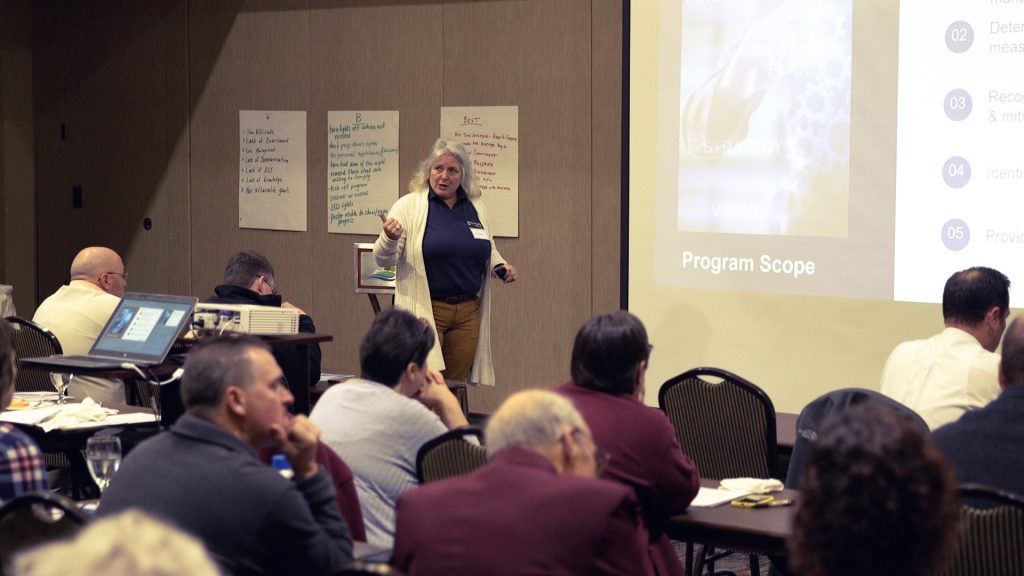
Wright grew up not far from the school, attended York Institute, left for college and briefly taught in the Nashville, Tennessee area before returning to his community. He says the school is the pride and joy of the community and has a way of pulling people back home. “Ninety percent of our staff graduated from here and we take pride in our heritage.”
As the rigors of another school year unfold into the ease of summer, Wright exudes a bit of serenity. He breezes through the hallway, not having to dodge procrastinating students making a mad dash to their desks before the bell rings. He doesn’t have to lay down the law with a misbehaving teenager or worry about the ones who show up in his office in tears. He doesn’t take off all his hats though. He still makes routine maintenance checks and turns off any lights left on by the staff still coming to school. As he’ll tell you, every little bit helps.
“I knew we would be saving, but it really was a surprise we saved so much”
Many school districts operate on a razor-thin budget. The risk of going in the red could mean teacher layoffs and program cuts that ultimately negatively impacting students. “We’re looking for any way to save money,” says Wright.
During the School Uplift pilot, Wright had his administrative staff track their energy use and utility spending. He could see the savings add up month to month, but couldn’t believe the school, in the end, saved $43,000 in energy costs.
“This is huge for us,” says a delighted Wright. “Absolutely every dollar that we can save in our budget goes back to our students.”

While the goal of the EnergyRight School Uplift pilot was to help schools save energy and money, the schools also competed against each other to achieve energy-saving milestones, with York being the first to complete all of them. Several participants received grants for energy upgrades and solar pavilions.*
“EnergyRight’s mission is to partner with local power companies to transform lives and communities with industry-leading energy services and programs,” says Cindy Herron, vice president of TVA’s EnergyRight program. “Helping schools save money on their energy costs and improve learning environments is an important investment in the Valley’s future.”
The other schools that participated in the School Uplift pilot include:
● Bledsoe County High School, Bledsoe County
● Pikeville Elementary School, Bledsoe County
● Pine Haven Elementary, Fentress County
● South Fentress Elementary, Fentress County
● Coalfield Elementary, Morgan County
● Sunbright Elementary, Morgan County
● Pickett County K-8, Pickett County
● Pickett County High School, Pickett County
● Spencer Elementary, Van Buren County
● Van Buren High School, Van Buren County
TVA is investing $7.3 million in School Uplift over the next three years to help 160 schools in seven states. The state of Tennessee’s Energy Efficient Schools Initiative is partnering with TVA and has provided an initial $600,000 in matching funds.
Many teachers will use their summer break to plan for next year, but Wright is already looking beyond that. He has a multi-year plan underway to replace all the lights with energy efficient LEDs.
“The impact of the School Uplift program will be felt for years to come,” says Wright.
To learn how School Uplift supports our region’s schools, visit EnergyRight.com/school-uplift.
*Sunbright Elementary was awarded a solar pavilion grant after the publication of this press release.
TVA EnergyRight Quality Contractors Network offers homeowners peace of mind
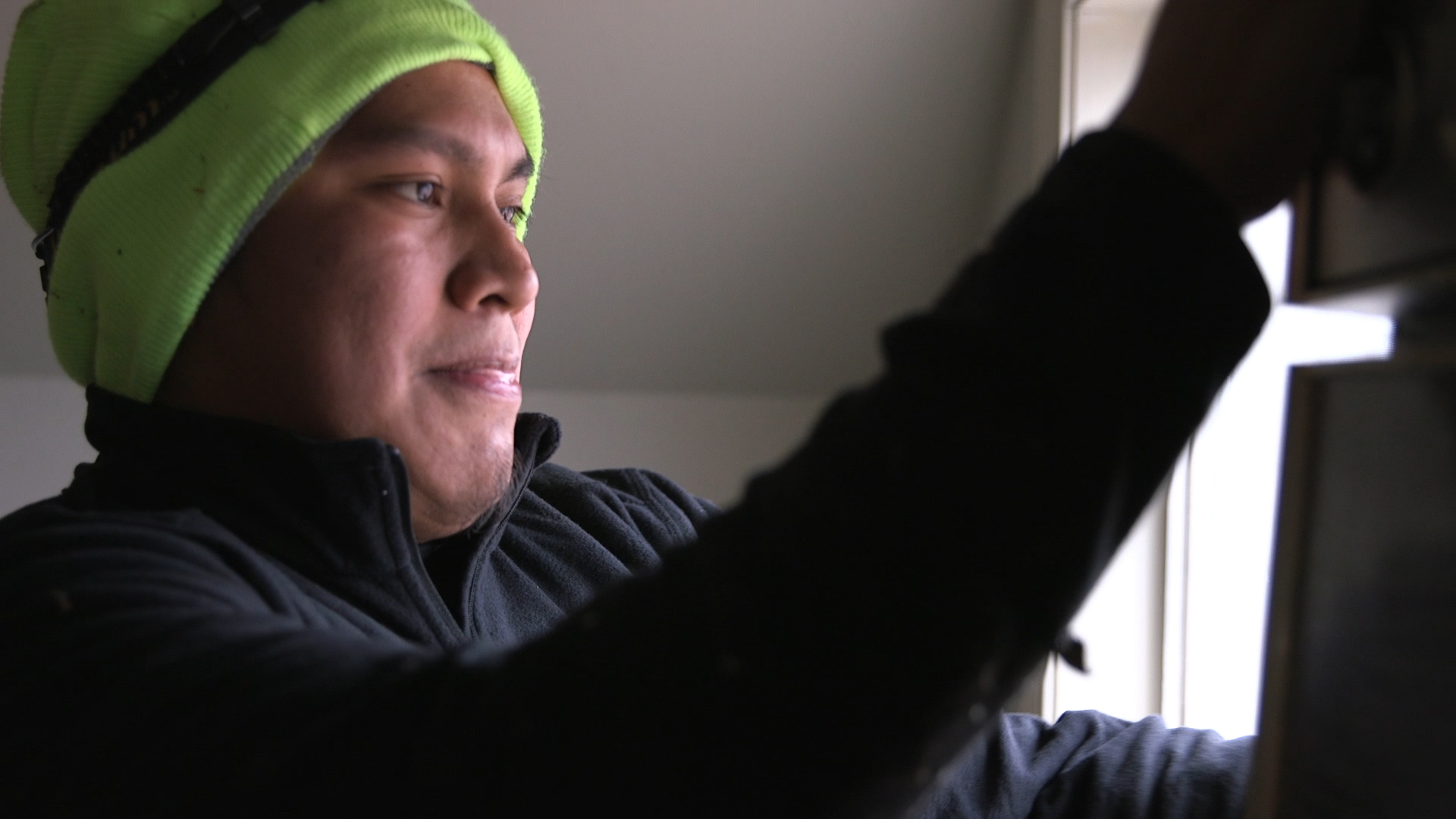
Dwight Bailey has sat down at many kitchen tables to discuss with potential customers one of the biggest home appliance purchases they may ever make: an HVAC system. HVAC stands for heating, ventilation and air conditioning, and it heats homes in the winter and cools them in the summer.
Bailey doesn’t take this part of the job lightly. He spends a couple of hours with each customer, not only learning what they need in a new HVAC, but also getting to know them on a personal level. “I was with one customer who was the secretary to Mamie Eisenhower,” recalls the salesman for City Heating and Air.
A new HVAC can cost a homeowner thousands of dollars, so one of Bailey’s biggest goals is to provide customers peace of mind with their purchase.
“We have a good reputation,” says City Heating and Air owner Mike Davis. “We’ve always tried to put the customers first. We want what’s best for them, not what’s best for us.” Company reputation means quite a bit to Davis. Working with a limited advertising budget, the Knoxville-based company relies on word of mouth, which holds a lot of worth.
Davis regularly puts in 12-hour days, getting into the office around 6 each morning, looking at every service call his team will be working for the day. He flags repeated service calls for possible issues and manages any emergencies that pop up. It’s this attention to detail that garnered City Heating and Air an award for Contractor of Year from TVA EnergyRight® Residential Program for several years. The company is also a legacy contractor with EnergyRight’s Quality Contractor Network.
“I think it holds us to a higher standard,” says Davis.
Training and continuing education
Contractors in TVA EnergyRight’s QCN are provided initial training before joining the network, but the education doesn’t stop there. They receive continuous instruction on an ongoing basis.
“They have a lot of good training. If there is new technology, we can watch videos or take classes on airflow, insulation, air sealing — all the things that affect the homeowner,” says Davis.
About an hour and a half southwest of Nashville, Ray Brewer has been running his HVAC business for nearly 35 years with his son. He’s been part of the QCN for about 20 of those years and says it helped improve his skills over that time. “EnergyRight is very particular about the quality of the work. We had to bring our game up,” says Brewer.
Brewer works closely with Nathan Wagner, an energy specialist at Meriwether Lewis Electric Cooperative, who oversees the QCN members in his area.
“TVA EnergyRight puts them through a set of standards set forth by the Department of Energy. It provides the best outcomes for our members. They’re getting good, efficient work. We always say we serve our members, not the meter,” says Wagner.
EnergyRight inspection gives customers peace of mind
Once a QCN contractor completes the work, EnergyRight inspects it to ensure it’s done correctly. Wagner is one of the inspectors. “I will check the insulation, heat pumps, whatever it may be to make sure that they meet those standards,” says Wagner.
QCN members must maintain a 96% passing rate. Wagner works with his contractors before his inspection to make sure they provide high-quality work. “I give them all the information they need up front to perform a pre-inspection before I arrive. It ensures they’ve checked all their boxes and done everything they needed. Then when I arrive, I examine their work to make sure they checked all those boxes and to make sure everything is operating correctly.”
Zack Dawson has been with Capitol Window and Door in a sales position for several years and took over as owner in February 2020. The Bowling Green, Kentucky, company has been installing windows for nearly 65 years. “The reason many people purchase windows is because their current windows are wearing out, and they want something that’s efficient and will help them save on their utility bills,” says Dawson.
For the past 10 years, they’ve been installing windows as a TVA EnergyRight-approved and trained contractor. Dawson welcomes the oversight offered by EnergyRight, saying it ultimately benefits his customers. “If you’re the customer, and you’re replacing your windows, why would you not want to have a third party make sure it was done correctly? When I purchase a used car, I take it to a mechanic who does not work at the dealership to inspect it.” For local power companies, the partnership with TVA EnergyRight to offer the QCN helps them when customers reach out with questions. “When customers call and they’re concerned about their energy consumption, it’s already a stressful situation,” says Knoxville Utilities Board spokesperson Stephanie Midgett. “But by guiding them to TVA EnergyRight’s QCN, that’s just an added bonus to provide peace of mind. We know the customers are in good hands, and they’re going to get the results that they desire.”
“Sometimes finding a contractor to do work for you can be a job in itself,” adds Scott Duvall with Warren Rural Electric Co-Op Corporation. “You worry if the person is going to do a good job. Are they going to get me the results I want? When you go through the QCN, you don’t have to worry about that.”
Selecting a contractor for the QCN doesn’t come with any extra cost, but it does come with additional peace of mind. Visit our website to find a TVA-qualified contractor in your area.
More residents can find affordable housing in Oxford, thanks to a partnership with the city, builder, local power company and TVA

The autumn sun rises on a quiet morning in historic Oxford square. Known locally as simply “The Square,” in a matter of hours, this entertainment epicenter will come alive in this small Mississippi town.
The Lafayette County Courthouse, a white, Greek Revival-style building on the National Register of Historic Places, sits at the center of The Square. It is surrounded by modern-day boutiques, restaurants, world-renowned independent bookstores and art galleries.
The dichotomy could be striking, or a representation of what Oxford truly is – a football town with a thriving arts community, the largest university in Mississippi in an area with a large population of retirees, folks buying a second summer home while others struggle to make rent.
Oxford’s Southern charm doesn’t make it immune to a common problem — rising housing prices brought on by an influx of people, mostly students and retirees, wanting a small-town college experience or a relaxed lifestyle post-career. But as new renters and homeowners moved in over the last decade, many of Oxford’s low-income residents were pushed outside the city limits.
“Oxford is an expensive place to live,” says Pam Brown, a resident assistant at North Mississippi Regional Center. “Because of the students, they charge rent by the room. If you pay $500, $600 to $700 a room, that’s $1000 to $1400 dollars a month.” The students Brown is referring to are the nearly 24,000 University of Mississippi students, nearly 75% of whom live off campus.
While affordable housing issues can have myriad causes, Oxford can actually point to one very famous Ole Miss grad whose talents and popularity accidentally fueled housing crisis: Eli Manning.
“Oxford has been a victim of its own success”
If “The Square” is the center of Oxford, The Grove is the heart of Ole Miss’ campus. The large oak, elm and magnolia trees in The Grove are lush, providing shade to students heading to class. But during football season, it’s the place to be for Landshark tailgating.
The New York Times described its allure as “every kind of party you can describe, at once: cocktail party, dinner party, tailgate picnic party, fraternity and sorority rush, family reunion, political handgrab, gala and networking party-hearty — what might have inspired Willie Morris, one of Mississippi’s favorite sons, to declare Mississippi not a state, but a club.”
Oxford nearly doubles in size, to around 50,000, from the time students start their first semester until their final exam. A college football home game pushes the population of Oxford to nearly 200,000. University of Mississippi, often referred to as Ole Miss, plays in one of the toughest conferences in college sports.
“Eli Manning came to the university 18 years ago and all of a sudden there was a resurgence to the old days when his father, Archie Manning, played here,” says TVA employee David Sparks, who has lived in Oxford for several years. “He was the greatest Ole Miss quarterback of all time.”
Eli would step out of his father’s shadow to set 47 school records.
“More fans wanted to buy tickets. That resulted in the stadium being expanded, which meant more people buying second homes and more businesses opening,” says Sparks.
“The thought is, if our biggest complaint is growth, then we should not complain, as many towns would give their right arm to have the same things that we consider as problems,” says current mayor Robyn Tannehill. She says in the last decade, Oxford has grown 23%. “But we also have had challenges along the way.”
“You can easily tell whether the Ole Miss football team won or lost that year, based on home values,” says housing developer Stewart Rutledge. Four years of a winning season sent home prices soaring in the early 2000s, impacting people outside the bright lights of Vaught Hemingway stadium for the next two decades.
“We have an amazing community of writers, artists and musicians from around the world,” says Tannehill. Unfortunately, we are at the point that if you don’t have a low rent district, you don’t have an artists’ district. Oxford has been a victim of its own success in a whole lot of ways.”
While the wins tapered off with Manning’s departure, the spotlight never really left Oxford, as it often found itself on many “best small towns” lists.
But for folks like Martel McEwen, winning seasons and best-of lists mattered very little.
“There are two different Oxfords,” says McEwen, who is currently looking for employment. He grew up in the city all his life and watched the divide between the haves and have-nots grow deeper.
“I have worked many jobs and I found myself working to just be broke.”
“I thought that I would never develop in Oxford”
Tannehill followed a playbook like many in this town – come to Ole Miss for the education, stay in Oxford for the small-town hospitality and affordability. It’s the reason it’s called a “velvet ditch” – a comfortable place that’s hard to leave. After college and marriage, Tannehill was a small business owner active in her community. But she also saw that many people were being priced out of Oxford. Artists, waiters, bartenders and barbers could no longer afford to live in the community where they worked. She became an alderman then ran for mayor three years ago with affordable housing a cornerstone of her campaign.
“We are a tourism community,” says Mayor Tannehill. “Most of the jobs in the hospitality industry are not high paying, so affordable housing becomes a huge issue for us. People invest their heart and soul into this community to make it what it is. We want them to be able to afford to live here as well.”
Ole Miss, the largest employer in Oxford, saw many of their 3000 employees struggle as well. “People want to be part of the communities within which they work,” says Dr. Noel Wilkin, Provost & Executive Vice Chancellor for Academic Affairs. “That’s even more important for an academic institution where we have a community of scholars. The university itself is almost like a little city that operates 24 hours a day. We want people to feel the connection, not only to the institution as an employer, but to the community overall.” Wilkin says everyone from educators to janitors struggle to find affordable housing within Oxford, keeping them from fully being involved in the community.
Tannehill reached out to housing developers like Stewart Rutledge who candidly told her that red tape kept developers from building affordable housing in Oxford.
“I thought that I would never develop in Oxford because for the last at least 10 years, land in Oxford has been exorbitantly expensive,” says Rutledge, owner of Rosedale Corporation. He said the environment started to change five years ago when Mississippi’s Housing Finance Agency changed the funding mechanisms to make purchasing higher price land financially feasible with moderately restricted rents. He also says Mayor Tannehill helped clear any final hurdles.
TVA EnergyRight’s New Homes Program also helped. Offered in partnership with Oxford Utilities, it drives investment in the communities TVA and Oxford Utilities serve by providing incentives for new construction including affordable housing.
“The New Homes program not only gives opportunities for builders and developers, but it can help lower that cost for a family to have a new home. And typically, a new home is the largest single investment a family makes,” says Sparks.
To qualify for incentives, developers must build all electric, energy-saving homes.
“We don’t want our customers’ bills to be so high that they can’t afford to pay their bill,” says Oxford Utilities manager Rob Neely. “So, we would like for the customer to have the energy they want and need and that they can afford. In turn, they can take those savings and make investments, spend money in the community.”
“When we first heard about EnerygRight’s incentives, we thought it was too good to be true, but they do care beyond just running power through the poles,” says Rutledge. “They have partnered with us to make sure our affordable homes have the best chance at surviving because when you’re doing workforce and affordable housing, you need all the help you can get.” Rutledge chose to put the incentives he received from EnergyRight back into maintenance and upkeep of the housing.
Tannehill realizes affordable housing will remain an issue in Oxford long after she leaves office. She’s developed a Vision 2037 plan to hopefully keep Oxford moving in the right direction. “It is the plan that helps us rethink all of our land use, all of our development issues and housing issues. We constantly ask ourselves, ‘What are the things that we treasure most about Oxford? How do we protect those things as we encourage growth?’”
Ole Miss faculty members sit on a housing committee to find innovative solutions, like the conversion of transitional faculty housing into affordable housing. “We worked with the city to find a piece of property, relocated all of those houses into the city, and make them available at affordable rates,” says Wilkin.
“Stewart Rutledge, Mayor Tannehill and TVA EnergyRight have done such a great job of bringing this home to Mississippi to have affordable energy and affordable housing in Oxford,” says U.S. Representative Trent Kelly.
Rutledge has already built two affordable housing properties – Belle Rivers and Eastover, where McEwin and Brown now live. The homes in the communities feature three bedrooms and 2.5 baths, walk-in closets, washer and dryer, carpet and laminate vinyl flooring. There are also clubhouses and playgrounds.
McEwin recently celebrated his 30th birthday in his new home. It’s a far cry, he says, from the days living in his car and taking bird baths.
“I’ve never been prouder of myself than right now. I have this old saying that I’ve always stuck with since I was seven. If tomorrow is going to be just like yesterday, then that means today wasn’t about a thing.”
When she comes home from her shift, Brown can hear the wind chimes and tends to her growing flower bed and sees a future that she didn’t believe could happen.
“I really love my home. I now have something that I can leave my daughter.” Her daughter Precious is attending Mississippi State and comes home on weekends. The mother and daughter lived for nearly two decades in Riverside, a community of subsidized low-rent apartments. Brown says it never truly felt like home.
“My daughter says, ‘I’ve never lived anywhere we have a back door.’ I said, ‘Well, now we’ve got a back door and a two car garage,’” Brown says with a smile.
